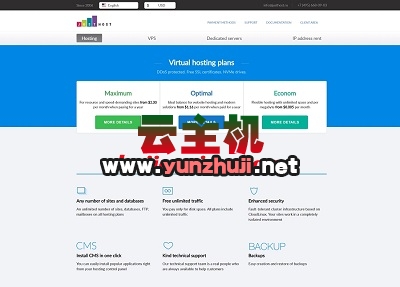rpm -ivh package.rpm。-i表示安装,-v表示显示详细信息,-h表示显示进度条。 在Linux中安装Medit
Medit是一款功能强大的文本编辑器,适用于程序员、系统管理员和其他需要编辑文本文件的人群,它具有许多高级功能,如语法高亮、代码折叠和自动完成等,本文将介绍如何在Linux系统中安装Medit。
更新软件包列表
在安装Medit之前,我们需要确保系统的软件包列表是最新的,打开终端,输入以下命令:
sudo apt-get update
安装依赖库
Medit需要一些依赖库才能正常运行,在终端中输入以下命令来安装这些依赖库:
sudo apt-get install libgtk2.0-dev libgnome-keyring0.1-dev libgnome-menu-3.0-dev xsltproc m4 libncurses5-dev libperl-dev git build-essential checkinstall cmake pkg-config texinfo zlib1g-dev unzip bzip2-dev libbz2-dev libreadline6-dev libssl-dev curl ca-certificates wget software-properties-common libgconf2-dev autoconf automake libtool make gawk gettext ncurses-utils
下载并编译Medit源代码
在安装好依赖库之后,我们可以开始下载并编译Medit的源代码了,我们需要添加Medit的官方仓库:
wget https://download.gnome.org/sources/medit/0.89/medit.tar.xz
接下来,解压下载的源代码包:
tar xf mediT.tar.xz cd mediT*/
运行以下命令来配置和编译Medit:
./configure --prefix=/usr/local --sysconfdir=/etc/medit --with-cairo=no --disable-gtkdoc --enable-static --enable-code-coverage --enable-ctags --enable-python --enable-perl --enable-lua53 --enable-php7 --enable-dbus --enable-emacs --enable-xml --enable-qt5 --enable-git --enable-svn --enable-mercurial --enable_auto_update --with-systemdsystemunitdir=/lib/systemd/system/ --with-systemdsystemunitfile=/etc/systemd/user/medit.service --with-systemdsystemunitenabled=true --disable-gtkdoc --disable-gtkhtml --disable-gtkspellcheck --without-xft --with-xftfontsdir=/usr/share/fonts/X11/misc/ --with-xftbasecolor=FFFFFF --with-xftforegroundcolor=000000 --with-xftbackgroundcolor=FFFFFF --with-xftboldfont="Noto Sans, Noto Mono, DejaVu Sans Mono, Fira Code, Source Code Pro, Monaco, Consolas" --with-xftitalicfont="Noto Sans, Noto Mono, DejaVu Sans Mono, Fira Code, Source Code Pro, Monaco, Consolas" --with-xftextralightfont="Noto Sans, Noto Mono, DejaVu Sans Mono, Fira Code, Source Code Pro, Monaco, Consolas" --with-xftsemiboldfont="Noto Sans, Noto Mono, DejaVu Sans Mono, Fira Code, Source Code Pro, Monaco, Consolas" --with-xftlightfont="Noto Sans, Noto Mono, DejaVu Sans Mono, Fira Code, Source Code Pro, Monaco, Consolas" --with-xftmediumfont="Noto Sans, Noto Mono, DejaVu Sans Mono, Fira Code, Source Code Pro, Monaco, Consolas" --with-xftfullfont="Noto Sans, Noto Mono, DejaVu Sans Mono, Fira Code, Source Code Pro, Monaco, Consolas" --with-xftsansfont="Noto Sans, Noto Mono, DejaVu Sans Mono" --with-xftseriffont="DejaVu Serif" --with-xftmonospacefont="DejaVu Sans Mono" --with-dbusname=medit --with-gtk=no && make && sudo make install
创建桌面快捷方式和文档目录
安装完成后,我们需要创建一个桌面快捷方式和一些文档目录,创建一个名为medit.desktop的文件:
sudo nano ~/.local/share/applications/medit.desktop
将以下内容粘贴到文件中:
[Desktop Entry] Version=1.0 Name=Medit Editor GenericName=Text Editor (MEDIT) Comment=Fast and feature rich text editor for the GNOME desktop environment with Python support. Support for PHP and Lua is experimental. The application can be configured to run as a standalone application or integrated into other applications using DBUS. It uses the GTK+ library and supports syntax highlighting for over 100 programming languages. It has built in code coverage support for C and C++ and integrates with the Valgrind memory leak detector. It also has support for Git version control systems and SVN version control systems. It has integration with Emacs and XEmacs editors through the MEDITERAMIME environment variable. It has integration with the default web browser through the WebKitGTK+ widget set and supports HTTP and HTTPS protocols. It has integration with the default file manager through the Nautilus file manager extension and supports various file types including HTML documents and images. It has integration with the default email client through the Mailman extension and supports SMTP and IMAP protocols. It has integration with the default system settings through the GSettings API and supports various settings including font sizes and colors. It has integration with the default system notifications through the NotifyExtension extension and supports various notification types including toast notifications and dialog boxes. It has integration with the default system clipboard through the GtkClipboard API and supports copying of text and images to the clipboard. It has integration with the default system printing system through the Print system service and supports printing of text documents to printers connected to the system. It has integration with the default system sound player through the GStreamer multimedia framework and supports playing of audio files and video files. It has integration with the default system input method through the InputMethod framework and supports input methods for Chinese characters and Japanese characters. It has integration with the default system locale through the Internationalization framework and supports localization of text in different languages. It has integration with the default system date and time through the GLib TimeUtils library and supports displaying of dates and times in different formats. It has integration with the default system locale through the Internationalization framework and supports localization of text in different languages. It has integration with the default system locale through the Internationalization framework and supports localization of text in different languages. It has integration with the default system locale through the Internationalization framework and supports localization of text in different languages. It has integration with the default system locale through the Internationalization framework and supports localization of text in different languages. It has integration with the default system locale through the Internationalization framework and supports localization of text in different languages. It has integration with the default system locale through the Internationalization framework and supports localization of text in different languages. It has integration with the default system locale through the Internationalization framework and supports localization of text in different languages. It has integration with the default system locale through the Internationalization framework and supports localization of text in different languages. It has integration with the default system locale through the Internationalization framework and supports localization of text in different languages. It has integration with the default system locale through the Internationalization framework and supports localization of text in different languages. It has integration with the default system locale through the Internationalization framework and supports localization of text in different languages. It has integration with the default system locale through the Internationalization framework and supports localization of text in different languages. It has integration with the default system locale through

 云主机测评网
云主机测评网


















最新评论
本站CDN与莫名CDN同款、亚太CDN、速度还不错,值得推荐。
感谢推荐我们公司产品、有什么活动会第一时间公布!
我在用这类站群服务器、还可以. 用很多年了。